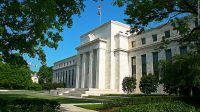
The US Federal Reserve has made its first rate hike after the financial crisis today, indicating the end of its sever year long easy money policy.
The move is extra ordinary as it will end a period of seven year long easy liquidity situation in the world that flooded liquidity in financial markets across the world including the debt and equity markets of the EMEs.
In its monetary policy statement on Wednesday, the Fed Chairman Janet Yellen announced increase in its policy rate which is known as the Fed rate by 0.25%. This is the interest rate that charged by the Fed while giving short term loans to the commercial banks.
The Central bank has signaled more increases to come “with gradual adjustments in the stance of monetary policy”.
Justifying its stance of ending the easy money policy regime, the Fed observed “economic activity will continue to expand at a moderate pace and labor market indicators will continue to strengthen”.
The US Central bank’s policy rate announcement will influence stock markets and currencies across the world. Increase in return in US may drive capital from many countries back to the US.
But since the rate hike decision was well noticed and propagandized, it is not necessary the decision will produce serious disturbances. The Fed and other central banks were giving adequate signals periodically and were guiding the financial markets across the world that the decision will happen soon.
Still it is expected that some weak economies with too much dependence on foreign capital flows and that doesn’t have growth prospects will be adversely affected.
The Fed rate was made near to zero by her predecessor Ben Bernanke who launched the unconventional monetary policy in the form of Quantitative Easing.
Fed’s policy decision is announcement of return to ‘normalcy’- a situation of normal interest rate and normal liquidity in contrast to the excess money supply and low rate of interest. The low rate of interest driven monetary policy was expected to drive employment and growth in the US economy.
Continuation of the policy may disturb financial market conditions especially it may tempt banks to lend too much and in the process creating another financial crisis of 2007 type.
*********










